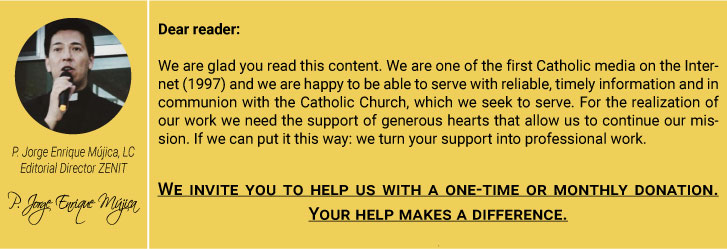By Mariaelena Finessi
ROME, NOV. 12, 2010 (Zenit.org).- A newly published book documents the 1943 bombing of the Vatican, with recently discovered documentation on the event and facts about who was responsible.
Augusto Ferrara’s Italian-language book, «1943 Bombe sul Vaticano» [1943 Bombs on the Vatican] was presented Nov. 5, the 67th anniversary of the attack.
Cardinal Giovanni Lajolo, president of the Pontifical Commission for Vatican City State and of the Governorate of Vatican City State, participated in the book’s presentation. He recalled the bombing, stating that «it was a wretched, vile episode, because it was directed against an unarmed and defenseless state.»
He added that «one wondered what sense an event of such a nature could have other than that of an insult.»
Cardinal Lajolo explained that it «was the only act of violation of the territorial sovereignty of the Vatican state since its creation.»
Despite this, he said, the event demonstrated that the Vatican «in as much as it was small,» showed «the efficacy of its function of protection of the Pope,» whose «liberty and independence» it ensured.
Unknown to many, the episode was shrouded in mystery for several years. Ferrara’s volume finally throws light on the event thanks to complete documentation made from newspaper clippings of the time and, above all, of images, to date unpublished that the author, a known philatelist, found in a bookstall in Verona, Italy.
In all there are some thirty photographs taken on November 6, 1943, the day after the bombing. A personal note of the photographer, also kept in the envelope, indicated the hour of the event.
Though Vatican City was hitherto spared during the war, that evening a plane flew over. At 8:15 p.m. five bombs were released, of which one remained unexploded.
The consequences are imprinted in those photos: the water reservoir in the railroad station and offices of the governorate were destroyed; the glass in the rear of St. Peter’s Basilica was shattered.
Finding those responsible
The event was covered both in L’Osservatore Romano as well as in Italian and foreign newspapers. To identify the perpetrator of the attack, the Vatican Secretariat of State asked for clarifications from the foreign ministers of the powers of the time: the United States, England and Germany.
Published in the book is the relevant correspondence: U.S. General Dwight Eisenhower, the English government and the government of the Reich all denied responsibility.
The Italian Social Republic, led by Benito Mussolini out of Salo, accused the United States of the attack. The Fascist press speculated on the event, accusing the Allies of having violated the international norms and offending the symbolic place of Christianity.
In reality, Ferrara revealed that it was the Italian Fascists themselves who planned the attack on the Holy See.
The plane, which has since been identified as a SIAI Marchetti S.M. 79, an Italian bomber known as a «Sparviero,» took off from Viterbo, Italy. It had been a gift to the Italian Social Republic. The book offers a transcription of a telephone conversation, between a priest and Jesuit Father Pietro Tacchi Venturi, who was close to the Pope’s secretary of state at the time, which suggests that Fascist leader Roberto Farinacci ordered the bombing.
In the dialogue, the priest affirmed: «It was the Italians. We were able to verify it through persons who were present at all points of the development of the maneuver.
«It was a Savoia-Marchetti plane, which had on board five bombs destined to strike the Vatican Radio station, because Farinacci was convinced that it was transmitting to the enemy news of a military character.»
The news was confirmed by the director of L’Osservatore Romano, Count Dalla Torre. For a week there was talk of nothing else in the press. Then silence fell.
Cardinal Lajolo noted that it seems the event was quieted by an invitation of Monsignor Giovanni Battista Montini, the future Pope Paul VI, who worked at that time in the Secretariat of State of Pius XII, so as «to not fuel the risk of a possible civil war.»
The book, co-published by the Libreria Editrice Vaticana and Augusto Ferrara, was delivered to the Benedict XVI on Nov. 3.




